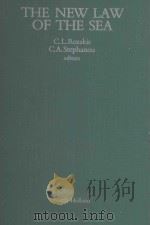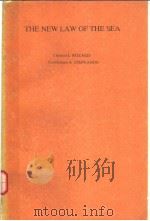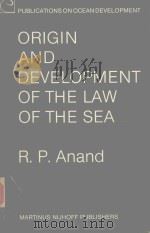《DEEPSEA MINING AND THE LAW OF THE SEA》
| 作者 | ALEXANDRA MERLE PLST 编者 |
|---|---|
| 出版 | MARTINUS NIJHOFF PUBLISHERS |
| 参考页数 | 358 |
| 出版时间 | 没有确切时间的资料 目录预览 |
| ISBN号 | 902473049X — 求助条款 |
| PDF编号 | 811454978(仅供预览,未存储实际文件) |
| 求助格式 | 扫描PDF(若分多册发行,每次仅能受理1册) |

PART ONE: THE PARAMETERS OF OCEAN MINING1
1. The geological parameter3
1.1 Ocean space3
1.2 Differences between land and sea relevant to ocean mining3
1.3 The high seas and deep seabeds4
1.4 Ability to use the sea5
1.5 The geological definition of ocean space5
1.6 Ocean minerals8
1.6.1 Sea water minerals8
1.6.2 Deposits on the ocean floor8
1.6.3 Minerals within the crust of the sea floor9
1.7 Manganese nodules - structure and occurrence11
1.8 Summary17
2. The technological parameter19
2.1 Reconnaissance: prospecting and exploration20
2.2 Nodule retrieval24
2.3 Surface and transportation systems27
2.4 Processing29
2.5 Summary31
3.The economic parameter33
3.1 Myths and misconceptions about the minerals markets33
3.2 The question of minerals scarcity39
3.3 World minerals demand40
3.4 Estimating estimates of supply41
3.5 Nickel45
3.6 Cobalt46
3.7 Manganese49
3.8 Molybdenum51
3.9 Copper53
3.10 Summary54
4. The environmental parameter57
4.1 The environmental impact of deepsea mining58
4.1.1 The ocean bottom58
4.1.2 The water column and the ocean surface59
4.1.3 Transportation corridors60
4.1.4 The processing plant60
4.1.5 Waste disposal61
4.2 Monitoring the environmental impact of ocean mining62
4.3 Government regulation62
4.4 Summary64
5. The historical parameter66
5.1 Technology and man's changing relationship to the sea66
5.2 A chronology of maritime history as related to ocean mining and the Conference on the Law of the Sea68
5.3 Implications of maritime history for the deepsea mining debate75
5.3.1 From maritime law to Law of the Sea75
5.3.2 From two- to three-dimensional sea use76
5.3.3 From geopolitical to technological determinism:The Soviet example76
5.3.4 From common claims to interest-claiming81
5.4 Summary84
6. The theoretical parameter88
6.1 Roman law: a sea held common89
6.2 Medieval law: the common good89
6.3 The seventeenth century: assessing the fundaments of the common stock and private property90
6.3.1 The nature of water91
6.3.2 Things held common91
6.4 The eighteenth century: a common will through law95
6.5 The nineteenth century: the political economics of common ownership96
6.6 The twentieth century: the legal and theoretical premises of an international common98
6.6.1 Non-ownership100
6.6.2 Access101
6.6.3 International administration vs. enclosure104
6.6.4 Peace and world order105
6.6.5 Strong penal108
6.6.6 Strong promotive110
6.7 Summary111
7. The political parameter116
7.1 The issues116
7.2 The participants118
7.3 The major arena of the seabed debate122
7.4 The prizes at stake123
7.5 The process124
7.5.1 The procedural quandry127
7.5.2 The Conference structure127
7.5.3 The ‘informal negotiating procedure'128
7.6 Alternatives130
7.7 Summary133
PART TWO: THE OPTIONS OF OCEAN MINING137
8. Early efforts at model building139
8.1 The Group of 77 model141
8.1.1 Exploitation rights141
8.1.2 Resource policy143
8.1.3 Governance143
8.2 The U.S. proposals143
8.2.1 Exploitation rights144
8.2.2 Resource policy145
8.2.3 Governance145
8.3 Proposals by the European Community and Japan146
8.3.1 Exploitation rights146
8.3.2 Resource policy147
8.4 Canadian proposals147
8.5 Soviet proposals148
9. The Informal Single Negotiating Text (ISNT)150
9.1 Exploitation rights150
9.2 Resource policy151
9.3 Governance151
10. The Revised Single Negotiating Text (RSNT)153
10.1 Exploitation rights154
10.2 Resource policy154
10.3 Governance155
11. The Draft Convention (ICNT)159
11.1 Exploitation rights160
11.2 Resource policy160
11.3 Governance160
12. Contradictions underlying Conference negotiations164
12.1 Security of supply vs. resource control164
12.2 A new maritime treaty vs. customary law165
12.3 Producer vs. regulator functions165
12.4 Equity vs. efficiency objectives165
12.5 A government vs. agency format166
12.6 Assuming tasks vs. capability to fulfill them166
12.7 National vs. international control167
12.8 Present vs. future regime building167
12.9 National vs. common international interests168
12.10 Positive vs. negative covariance168
12.11 LBP assistance vs. market expansion168
12.12 Authority control vs. corporate and state financing169
12.13 The costs of control vs. benefit sharing170
12.14 Spontaneous vs. discretionary order building170
13. Exploitation rights: the legal option172
13.1 Establishing authority competence in deepsea mining172
13.1.1 Bequeathing personality to an intergovernmental agency172
13.1.2 The right of intergovernmental organizations to enter commercial joint arrangements173
13.2 Changes in mining agreements175
13.2.1 Demise of the traditional concession175
13.2.2 Increased risk176
13.2.3 Transformation of the mining contract177
13.2.4 Lateralization of ownership and finance178
13.2.5 Increased market intervention179
13.3 The exploitation mandate of the authority180
13.3.1 Applicable law180
13.3.2 Title to resources180
13.3.3 Transfer of title180
13.3.4 Transport, processing and marketing181
13.3.5 The exclusive or priority rights of the Authority182
13.4 Exploitation rights of private and state entities183
13.4.1 Access183
13.4.2 The plan of work183
13.4.3 Anti-monopoly provisions185
13.4.4 The application procedure188
14. Regulating recovery: the resource policy option197
14.1 Implementors197
14.2 Production controls199
14.3 Participation in international commodity agreements202
14.4 Priority rights and anti-monopoly restrictions204
14.5 Adjustment assistance to land-based producers206
15. Funding ocean mining: the financial option209
15.1 Costs209
15.2 The financial structuring of ocean mining210
15.2.1 Risk211
15.2.2 Project phases211
15.2.3 Research phase212
15.3 The ocean mining groups215
15.4 Financing the public Enterprise219
15.5 Taxation221
15.6 An offering of ocean mining securities223
15.6.1 A participating bond offering to state holders224
15.6.2 A straight or participation bond to private investors227
Conclusion. The legal route to the sea231
Postscript235
A. Calendar of major events in 1982 - UNCLOS 11235
B.Major changes to the seabed mining regime incorporated at Session 11237
C.Important amendment proposals by state delegations, not in-corporated in final Convention of the Law of the Sea at Ses-sion 11239
Appendices245
Appendix one. United Nations CP Working Paper No. 2 with Addendum 1246
Appendix two. Draft convention on the Law of the Sea (frag-ments)246
1. Part Ⅺ: The area246
2. Annex Ⅲ: Basic conditions of prospecting, exploration, and exploitation298
3. Annex Ⅳ: Statute of the enterprise319
Bibliography329
《DEEPSEA MINING AND THE LAW OF THE SEA》由于是年代较久的资料都绝版了,几乎不可能购买到实物。如果大家为了学习确实需要,可向博主求助其电子版PDF文件(由ALEXANDRA MERLE PLST MARTINUS NIJHOFF PUBLISHERS 出版的版本) 。对合法合规的求助,我会当即受理并将下载地址发送给你。
高度相关资料
-
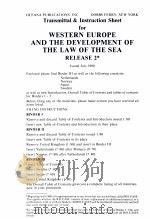
- WESTERN EUROPE AND THE DEVELOPMENT OF THE LAW OF THE SEA 1
- 1980 OCEANA PUBLICATIONS INC.
-

- DEEPSEA MINING
- 1980
-
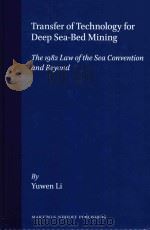
- Transfer Of Technology For Deep Sea-Bed Mining The 1982 Law Of The Sea Convention And Beyond
- 1994 Maptinus Nijhoff Publishers
-
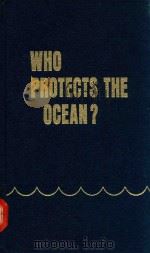
- WHO PROTECTS THE OCEAN? ENVIROMENT AND THE DEVELOPMENT OF THE LAW OF THE SEA
- 1975 WEST PUBLISHING CO.
-

- The International Law of the Sea
- 1994 Dartmouth
-

- Southeast Asia and the Law of the Sea
- 1978 SINGAPORE UNIVERSITY PRESS
-
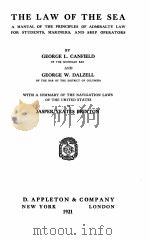
- THE LAW OF THE SEA
- 1921 D. APPLETON AND COMPANY
-
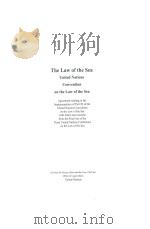
- The Law of the Sea
- 1997 United Nations
-
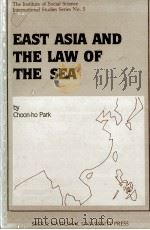
- EAST ASIA AND THE LAW OF THE SEA
- 1983 SEOUL NATIONAL UNIVERSITY PRESS
-
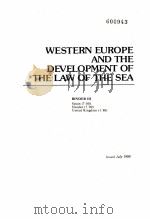
- WESTERN EUROPE AND THE DEVELOPMENT OF THE LAW OF THE SEA 3
- 1980 OCEANA PUBLICATIONS INC.
-
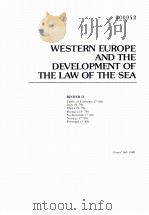
- WESTERN EUROPE AND THE DEVELOPMENT OF THE LAW OF THE SEA 2
- 1980 OCEANA PUBLICATIONS INC.
提示:百度云已更名为百度网盘(百度盘),天翼云盘、微盘下载地址……暂未提供。➥ PDF文字可复制化或转WORD
